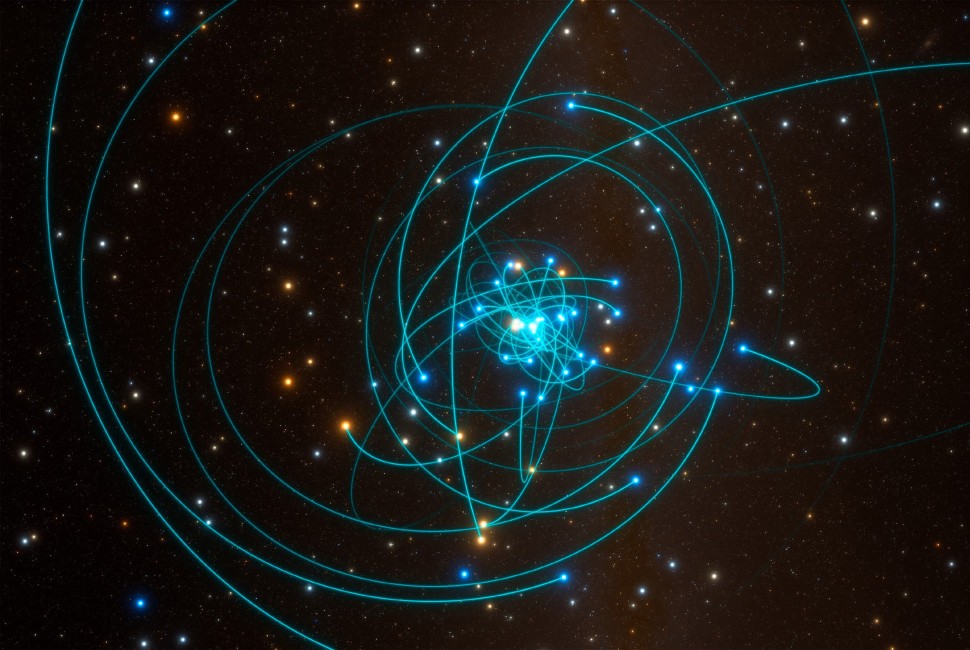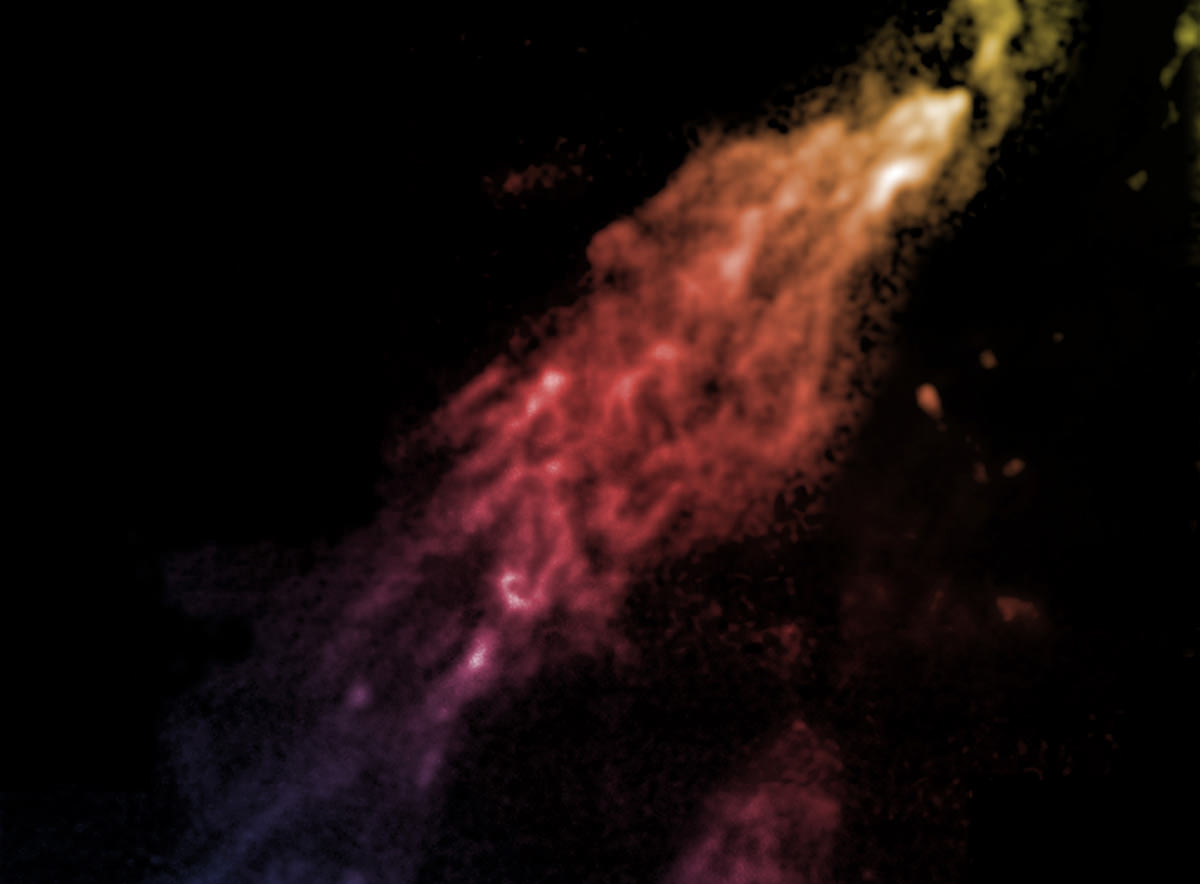A high-velocity cloud hurtling toward the Milky Way should have disintegrated long ago when it first collided with and passed through our Galaxy. The fact that it’s still intact suggests it’s encased in a shell of dark matter, like a Hobbit wrapped in a mithril coat.
Mapping dark matter — the unseen stuff that makes up more than 80 percent of cosmic matter — near our Galaxy is crucial to fully understanding how the Milky Way assembled over cosmic time.
This firstly requires detailed observations of nearby dwarf galaxies — galaxies each totaling a mass less than 10% of the Milky Way’s 200 to 400 billion stars — because they’re enshrouded in dark matter. More recently, it has been suggested that nearby high velocity clouds of hydrogen gas are encased in dark matter as well. But the effects of their dark matter halos remain unknown.
So Matthew Nichols from the Sauverny Observatory in Switzerland and colleagues set out to observe the Smith Cloud — a high-velocity cloud of hydrogen gas located 8,000 lightyears away in the constellation Aquila — in order to better constrain its dark matter halo. They used the Green Bank Telescope (GBT) in west Virginia in order to detect the faint radio emission of neutral hydrogen.
“The Smith Cloud is really one of a kind. It’s fast, quite extensive, and close enough to study in detail,” said Nichols in a press release. At its distance the cloud (9,800 lightyears long and 3,300 lightyears wide) covers almost as much sky as the constellation Orion.
“It’s also a bit of a mystery; an object like this simply shouldn’t survive a trip through the Milky Way, but all the evidence points to the fact that it did,” said Nichols. Previous studies of the Smith Cloud revealed that it first passed through our Galaxy many millions of years ago. By reexamining and carefully modeling the cloud, Nichols’ team now believes that it’s actually wrapped in a substantial halo of dark matter.
“Based on the currently predicted orbit, we show that a dark matter free cloud would be unlikely to survive this disk crossing,” said coauthor Jay Lockman from the National Radio Astronomy Observatory. “While a cloud with dark matter easily survives the passage and produces an object that looks like the Smith Cloud today.”
Not only does this study help astronomers start to characterize the dark matter enshrouding these seemingly harmless clouds, but it helps strengthen the case that the Smith Cloud isn’t purely a cloud of hydrogen gas, but a failed dwarf galaxy, originating from farther away in space. The presence of dark matter, however, will have to be further confirmed.
The paper has been submitted to the Monthly Notices of the Royal Astronomical Society and is available for download here.




